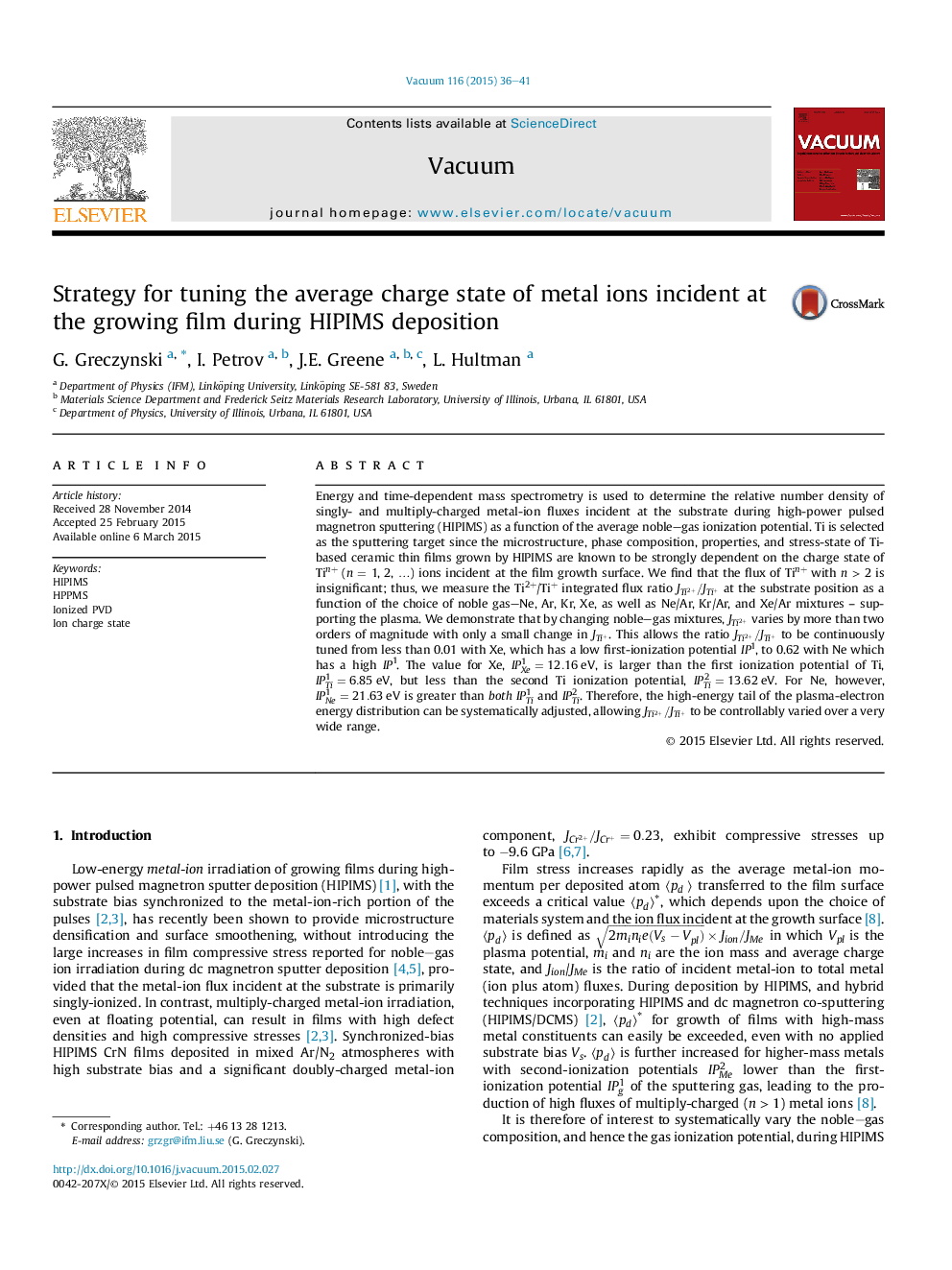| کد مقاله | کد نشریه | سال انتشار | مقاله انگلیسی | نسخه تمام متن |
|---|---|---|---|---|
| 1690413 | 1518953 | 2015 | 6 صفحه PDF | دانلود رایگان |

Energy and time-dependent mass spectrometry is used to determine the relative number density of singly- and multiply-charged metal-ion fluxes incident at the substrate during high-power pulsed magnetron sputtering (HIPIMS) as a function of the average noble–gas ionization potential. Ti is selected as the sputtering target since the microstructure, phase composition, properties, and stress-state of Ti-based ceramic thin films grown by HIPIMS are known to be strongly dependent on the charge state of Tin+ (n = 1, 2, …) ions incident at the film growth surface. We find that the flux of Tin+ with n > 2 is insignificant; thus, we measure the Ti2+/Ti+ integrated flux ratio JTi2+/JTi+JTi2+/JTi+ at the substrate position as a function of the choice of noble gas–Ne, Ar, Kr, Xe, as well as Ne/Ar, Kr/Ar, and Xe/Ar mixtures -- supporting the plasma. We demonstrate that by changing noble–gas mixtures, JTi2+JTi2+ varies by more than two orders of magnitude with only a small change in JTi+JTi+. This allows the ratio JTi2+/JTi+JTi2+/JTi+ to be continuously tuned from less than 0.01 with Xe, which has a low first-ionization potential IP1, to 0.62 with Ne which has a high IP1. The value for Xe, IPXe1=12.16eV, is larger than the first ionization potential of Ti, IPTi1=6.85eV, but less than the second Ti ionization potential, IPTi2=13.62eV. For Ne, however, IPNe1=21.63eV is greater than both IPTi1 and IPTi2. Therefore, the high-energy tail of the plasma-electron energy distribution can be systematically adjusted, allowing JTi2+/JTi+JTi2+/JTi+ to be controllably varied over a very wide range.
• Ti-based ceramics grown by HIPIMS are strongly dependent on the charge state of Tin+ (n = 1, 2, …).
• Ti2+/Ti+ flux ratio JTi2+/JTi+JTi2+/JTi+ is measured as a function of the choice of noble gas: Ne, Ar, Kr, Xe.
• With changing noble–gas, JTi2+JTi2+ varies by two orders of magnitude with only a small change in JTi+JTi+.
• JTi2+/JTi+JTi2+/JTi+ can be tuned from 0.01 with Xe, to 0.62 with Ne depending on gas IP.
• This strategy is applicable to wide range of metal targets that satisfy IPXe1
Journal: Vacuum - Volume 116, June 2015, Pages 36–41